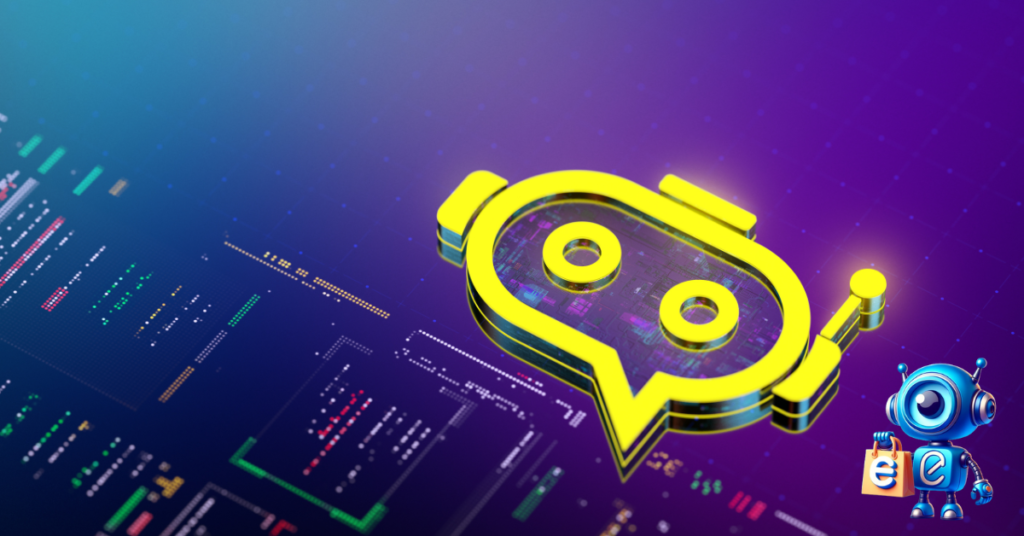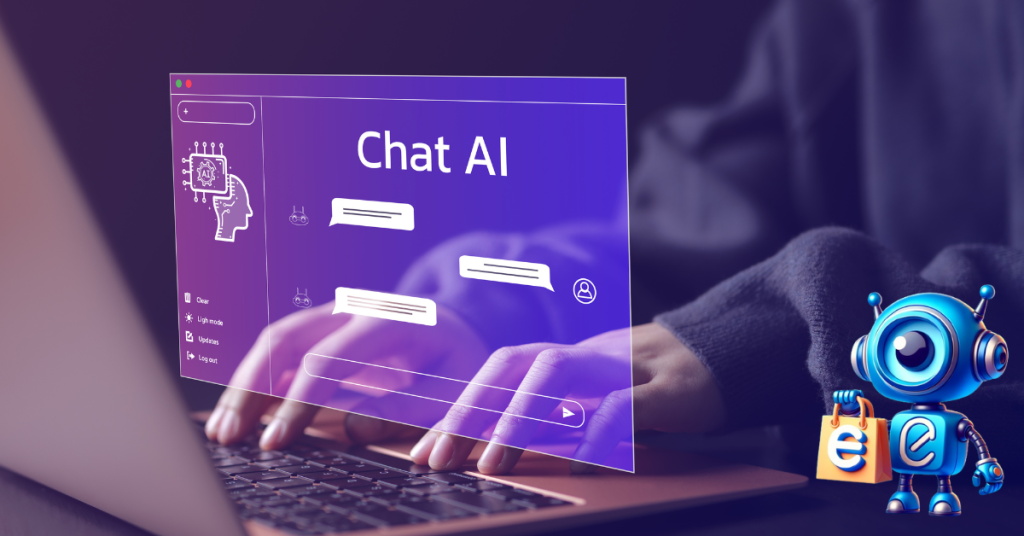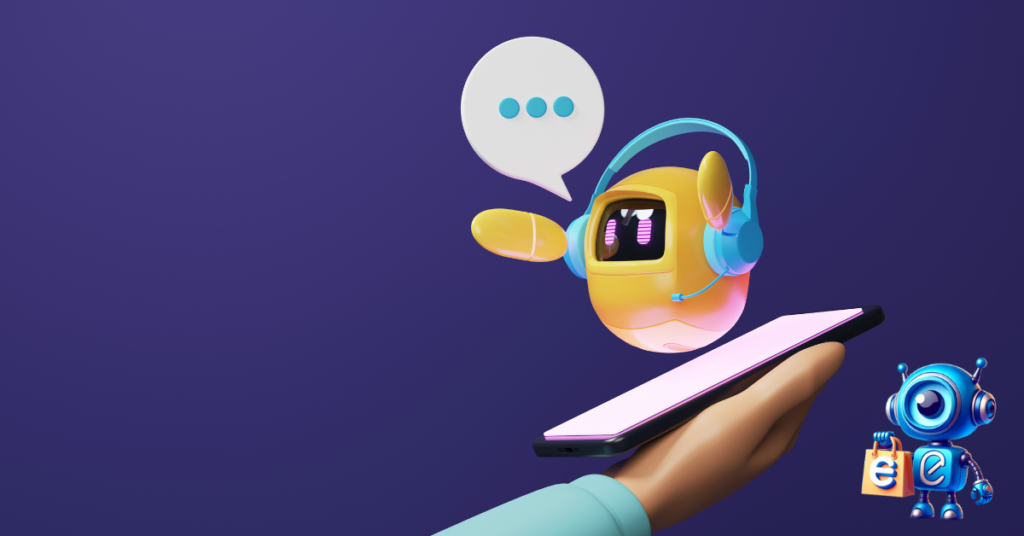For e-commerce entrepreneurs, customer retention and interaction are make-or-break issues; luckily, AI-powered tools are changing the industry.
The entry of AI chatbots has reshaped marketing in this digital age, helping business owners drive more sales and increase customer conversion rates.
Now, to answer the question.’ How do AI chatbots work? We must first understand the technology behind AI and how it powers business.
Table of Contents
How AI Chatbots Work And Power Systems?
AI chatbots are powered by Artificial intelligence; the primary mission of AI chatbots is to interact with users in a chat format when prompted with a customer question or query.
AI chatbots leverage natural language processing (NLP) and machine learning (ML) algorithms to hold informed and engaging customer conversations.
So, how do AI Chatbots work?
AI chatbots employ various AI technologies, from machine learning that optimizes responses over time to natural language processing (NLP) and natural language understanding (NLU) that accurately interprets user questions and matches them to specific intents.
Chatbots can read, translate, and understand languages, including typos, slang, and context, or interpret human input courses of NLP.
The ML algorithms empower chatbots and help them learn from interactions to improve their responses’ accuracy over time.

The more time and data AI chatbots receive, the more intelligent they become. They also increase their effectiveness by understanding more languages and meeting customers’ needs.
So when a customer asks an AI chatbot for a product recommendation, the AI user NLP understands the request. ML draws from its data resources to analyze customers based on previous interactions and shopping behavior on the site.
With both NLP and ML technologies, AI chatbots give accuracy.
Types of AI Chatbots and Their Role in E-commerce
Every second means everything in e-commerce; it can translate to many sales. Hence, e-commerce doesn’t have the luxury of slow response to customers.
There are various forms of AI chatbots, each servicing a specific role in the ecommerce business landscape:
Informational Chatbots
These are FAQs based on AI chatbots designed to answer customer queries quickly with pre-set common answers; the informational chatbots have preset-set configuration and FAQ trainer.
They leave less room for errors and respond to every query.
Transactional Chatbots:
When it’s time to close a deal, transactional AI chatbots handle the closure and the sales process, from product selection to ordering, all within the chat window; the whole process is seamless and straight to the point.
Conversational Chatbots
These chatbots are trained to adopt a human-like tone when conversing with your customers, which makes them feel they’re talking to a friend of a human being.
The Conversational chatbots deploy advanced NLP and ML models to engage in fluent, human-like conversation, making your customers feel understood and valued.
Support Chatbots
They offer after-sales support for customers who have issues with their product or need help configuring it; they are designed to troubleshoot problems and guide users through any issues they may raise.
AI chatbots provide instant answers and responses besides personalized services, and they can also handle unlimited customer queries simultaneously 24/7.
Quick and accurate answers increase conversion rates, make customers happier, and significantly decrease response time. All these are geared towards boosting sales.
AI Chatbots at Work Examples
AI chatbots play a crucial role in e-commerce operations, and you will likely find AI chatbots hard work at any given store or website. Therefore, providing a peek inside the types of AI chatbots you may encounter is also necessary.
Ecommerce Bot AI Powered Live Chat Bots
Ecommerce Bot has a comprehensive AI-powered live ChatBot platform designed to improve the performance of your e-commerce businesses by providing instant responses to your customers and Ads for Facebook, Instagram, and soon-to-come Tiktok Ads.
It offers AI bots for ad automation, AI-powered live chat and creation, social media automation planning, and customer interaction automation.

Shopify Bot, a subset of Ecommerce Bot, caters explicitly to Shopify store owners, leveraging AI interaction to drive sales.
Social Media Management Automation
Social media is an e-commerce battlefield for customer interaction. A social media AI manager enables automation to increase users’ engagement and conversion rates.
Social media is a battlefield for customer engagement. AI tools for crafting and scheduling posts, automated responses, and audience interaction redefine social media management on platforms like Instagram and Facebook, keeping the online buzz alive.
AI Live Chat: The Digital Sales Assistant
An AI live chat on your e-commerce site is like having a digital sales assistant. E-commerceBot and ShopifyBot’s advanced AI-driven live chat doesn’t miss a beat, providing real-time interaction that boosts customer engagement and drives sales.
The advanced AI live chatbot is designed to address e-commerce business owners and digital marketers who need AI-powered live Chatbots to help with customer engagement, increase interaction, and boost sales.
Ecommerce Bot AI live chatbot has many features that help personalize customer support for each individual.
FAQs Trainer
The FAQs trainer is strategically placed on every page to assist AI live chat learning more and offer accurate information based on the comprehensive knowledge base of the specific industry.
FAQ trainers help the AI chatbot learn faster and provide responses when prompted by customers. Since it uses the FAQ technique, it can pick common answers that have already been encountered.
The FAQ train encourages users to train the bot unknowingly by providing answers, which creates a dynamic learning loop.
AI ChatBot Personas configuration
The live chatbot goes beyond expectations and provides responses based on customizable personas that quickly adapt to different contexts.
Merchants can configure prompts for chatbot persona; you can then adjust the bot setting to output specific length to its answers and change the viewer’s point from (1st, 2nd, or 3rd Person).
You can change the Bot tone, language output, and response formatting and include response sources. The option to customize the bot’s settings makes bots align seamlessly with brand identity and communication style.
Read Also:
- What Is a Chatbot: How To Use It For Your Business
- Skyrocket Sales With AI Ecommerce Bot Solution
- Leverage Social Media Automation With AI Chatbots
- Top 5 Ecommerce Chatbots For Merchants Selling Online
- Top 5 Ecommerce Chatbots For Merchants Selling Online
- How To Create Instagram Posts With AI (5 Easy Steps)
- How To Create Instagram Posts With AI (5 Easy Steps)
- Top 5 Shopify Auto Checkout Bots: Boost Online Sales
- Top 5 Shopify Auto Checkout Bots: Boost Online Sales
- Top 5 Best Shopify Bots For Boosting Your E-Commerce
AI Chatbot Messaging Settings
Ecommerce Bot live chatbot provides timely responses, and the messaging setting allows merchants to configure the response times for messages and comments.
It’s essential to reply to customers on time; a one-second delay can break down your e-commerce business.
It’s essential to respond promptly to your customers’ queries to improve their general stratification; hence, all responses must be sent in 2 minutes.
Seamless handover to human agent
In case of a chat error or the user needs a chat escalated to a human agent, the AI chatbot does a seamless ticket escalation or chat transfer to agents, and the chatbot alerts the user about the transfer to agents.
AI Chatbot User Interaction
AI chatbots can send automated messages after user prompts; they create engaging conversational responses based on the customer query.
AI chatbot mimics human-like tones and interactions that help users chat unknowingly with chatbots.
Conclusion
AI live chatbot is an industry game changer for ecommerce entrepreneurs seeking the best solutions for customer support automation.
You can try Ecommercebot for free; no credit card is required. You agree to turn your E-commerce business into a success story by clicking the image below.

The AI chatbots stimulate natural human-like conversations with customers. The chatbots ensure that customer integration is top-notch and efficient for each business’s unique persona.
There is a need to embrace the future of customer support with AI technology integration; AI helps you understand, engage, and learn much about your customers while maintaining confidence and your business security.
FAQ’s
What is an AI chatbot?
An AI chatbot is a computer program that uses artificial intelligence (AI) to conduct a conversation via auditory or textual methods. Chatbots are designed to simulate a human conversational partner and are often used in customer service or messaging platforms.
How do AI chatbots work?
AI chatbots use machine learning algorithms to understand and respond to human language. They analyze user messages to identify intents and extract critical information, then use pre-defined responses or generate new ones based on the analyzed data.
What are the benefits of using AI chatbots in eCommerce?
AI chatbots can provide 24/7 support, personalized product recommendations, and faster response times. This improves customer engagement, increases conversion rates, and reduces pressure on human customer service agents.
Are there different types of AI chatbots?
Yes, AI chatbots can be categorized into four main types: rule-based, retrieval-based, generative, and hybrid. Each type has its unique approach and complexity in processing and responding to user queries.
How can AI chatbots improve customer service?
AI chatbots can instantly handle routine customer inquiries, freeing human agents to deal with more complex issues. They also ensure consistency in responses and can access vast customer data to provide personalized support.
What is needed to integrate an AI chatbot into a website?
To integrate an AI chatbot into a website, you must choose or create a platform, develop chatbot scripts or apply machine learning models, and connect the chatbot to your website’s backend systems through APIs.
How can the performance of an AI chatbot be measured?
AI chatbot performance can be measured by measuring user satisfaction, response time, first-contact resolution, and the number of queries the bot can successfully address without human intervention.
What is the AI technique for chatbots?
The primary AI techniques for chatbots include natural language processing (NLP) to understand user queries, machine learning to improve over time, and decision trees for structuring responses based on different scenarios.
What are the four types of chatbots?
- Rule-Based Chatbots: These follow a predefined set of rules to provide answers to frequently asked questions.
- Retrieval-Based Chatbots: They use predefined responses and a ranking system to select the most appropriate answer from a repository of reactions.
- Generative Chatbots: These AI chatbots use machine learning to generate responses to user queries, creating more human-like conversations.
- Hybrid Chatbots: Combine the above techniques for more complex interactions, often handling simple and complex queries.
How exactly does ChatGPT work?
ChatGPT leverages the OpenAI GPT-3 language model, which uses a transformer architecture to process and generate text. The model is fine-tuned for conversational tasks, enabling it to create coherent and contextually appropriate responses to user input.
How does a chatbot know what to say?
A chatbot uses AI to predict the most suitable response based on the user’s input. This is achieved through modeling, which includes training the chatbot on vast amounts of data to understand and predict human language patterns.
Is AI telling the truth?
AI, especially chatbots, provides responses based on the data it has been trained on. Therefore, the response’s accuracy depends on the training data’s quality and diversity. It is not “truthful” in the moral sense humans understand, but it can be factually correct within its training scope.
Why do AI bots act creepy?
Bots may seem “creepy” when they overstep privacy boundaries or provide too personalized or unexpected responses. This can occur when the AI behind the bot misjudges social norms or data privacy expectations. Maintaining a proper balance in bot behavior is crucial to avoid this perception.

